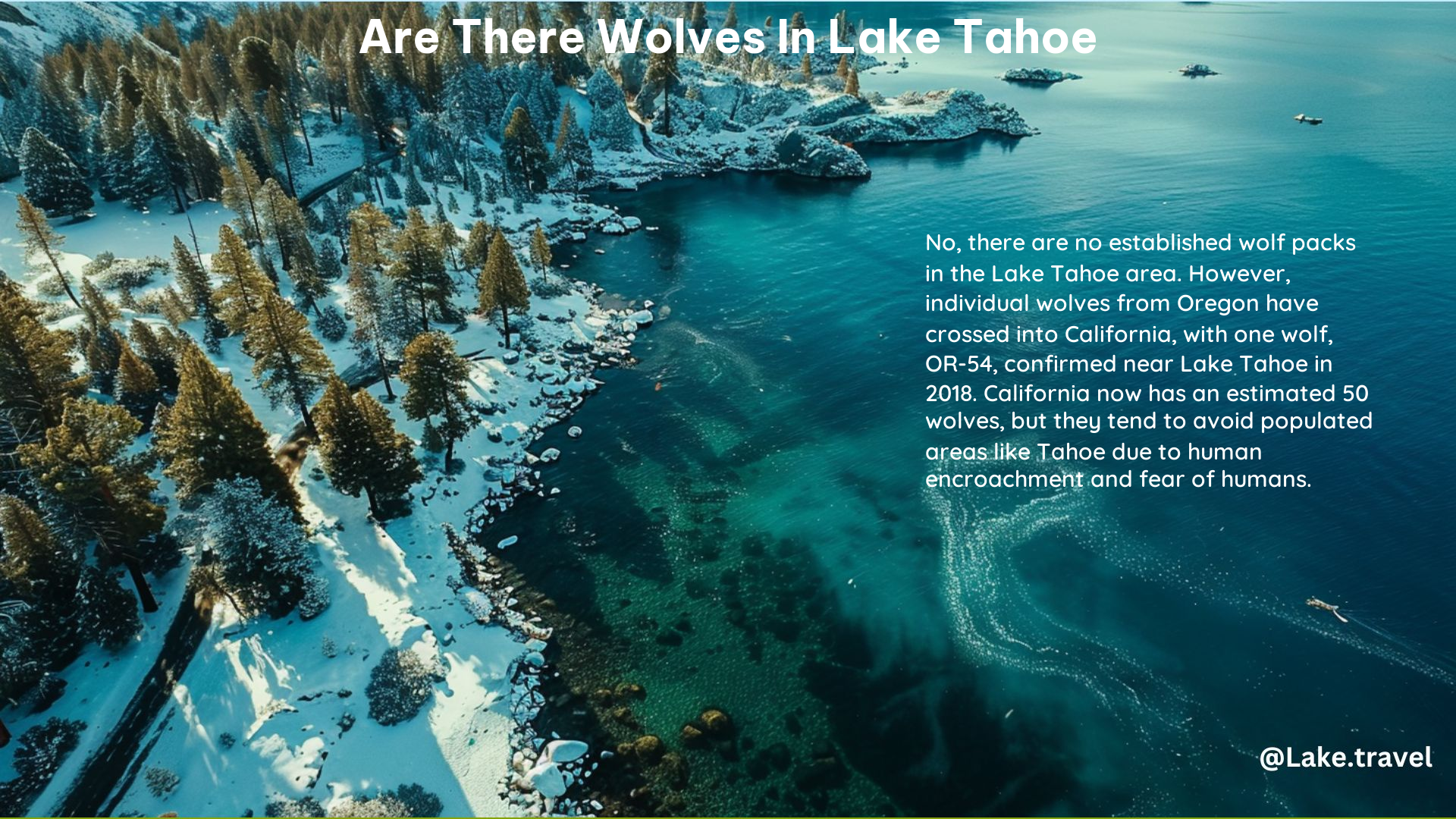No, there are no officially recognized wolf packs or resident wolves in the Lake Tahoe area of California. However, there have been instances of individual wolves from Oregon crossing into the region, with one notable example being OR-54, a 2-year-old gray wolf who ventured close to Lake Tahoe in 2018.
Recent Sightings and Presence
OR-54: The Wandering Wolf
In June 2018, OR-54, a collared wolf from Oregon, was tracked using her GPS collar to within 1½ miles of the Boreal Mountain ski area near Lake Tahoe. This marked the first confirmed presence of a wild gray wolf in Nevada County in at least a century.
Other Sightings
While there have been reports of other wolves in the region, these are not part of established packs in the Lake Tahoe area. For example, the Beckwourth Pack has been detected in Sierra and Plumas counties, which are relatively close to Lake Tahoe, but their movements are not well-tracked due to the lack of radio collars.
Habitat Suitability

Lake Tahoe’s high-elevation environment, with its cold winters and heavy snowfall, is suitable for gray wolves. They have adaptations such as insulating fur and large paws that help them navigate deep snow, making the area theoretically habitable for them. However, human encroachment and the presence of roads and human activity may deter wolves from settling in the area.
Factors Affecting Wolf Presence
Prey Availability
The availability of prey, such as deer, elk, and small mammals, is a crucial factor in determining whether wolves will establish a presence in the Lake Tahoe region. While the area does have a diverse wildlife population, the high level of human activity and development may limit the abundance of suitable prey for wolves.
Human-Wolf Conflict
The proximity of Lake Tahoe to human settlements and recreational areas poses a significant challenge for wolf conservation. Wolves may be perceived as a threat to livestock or pets, leading to potential conflicts with local residents. This can make it difficult for wolves to thrive in the region without facing persecution or being forced to relocate.
Habitat Fragmentation
The Lake Tahoe basin is surrounded by a network of roads, highways, and human development, which can fragment the landscape and create barriers for wolf movement and dispersal. This can make it challenging for wolves to establish and maintain a stable population in the area.
Conservation Efforts
While there are no established wolf packs in the Lake Tahoe region, conservation organizations and wildlife agencies are closely monitoring the situation. They are working to understand the potential for wolf recolonization in the area and to develop strategies to mitigate human-wolf conflicts should wolves return to the region.
Conclusion
In summary, while there have been occasional sightings of individual wolves near Lake Tahoe, there are no officially recognized wolf packs or resident wolves in the area. The region’s high-elevation environment and diverse wildlife population may be suitable for wolves, but factors such as human activity, prey availability, and habitat fragmentation pose significant challenges for their long-term establishment in the Lake Tahoe basin.
